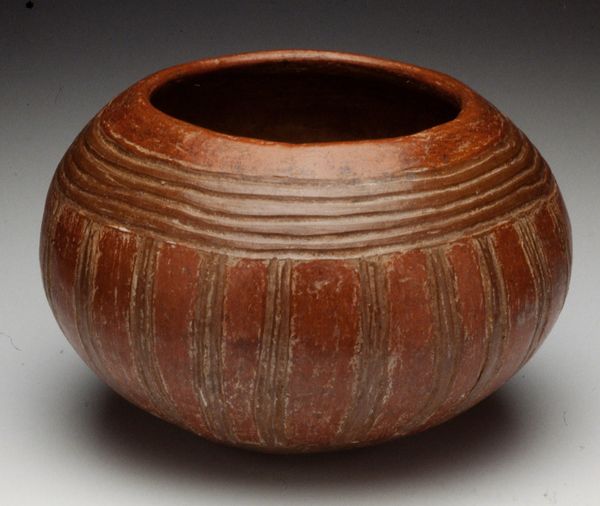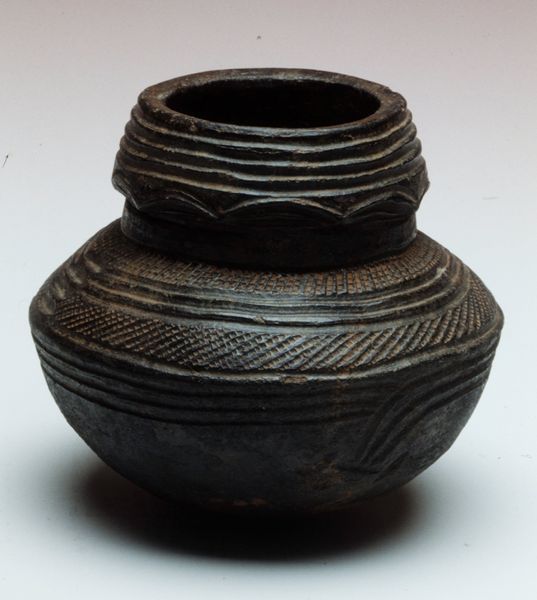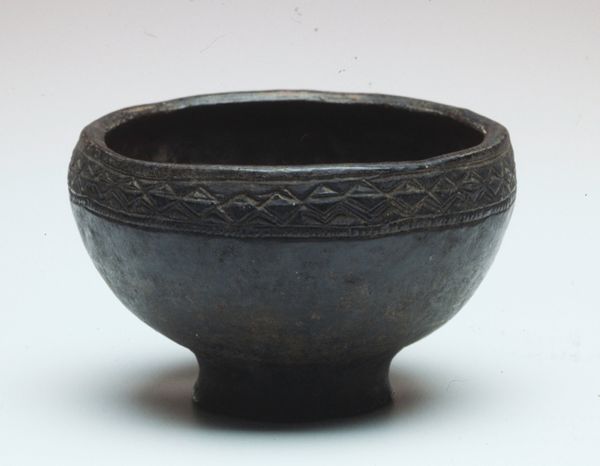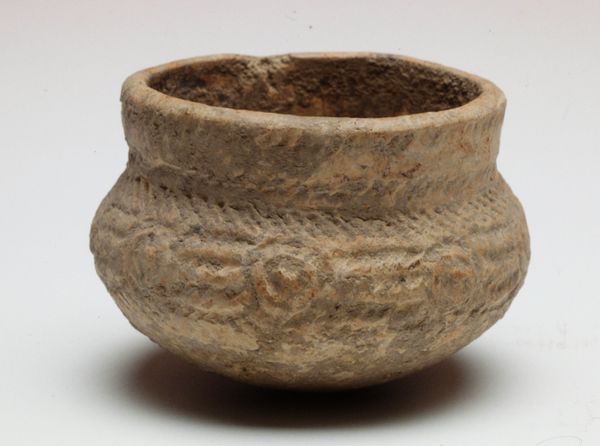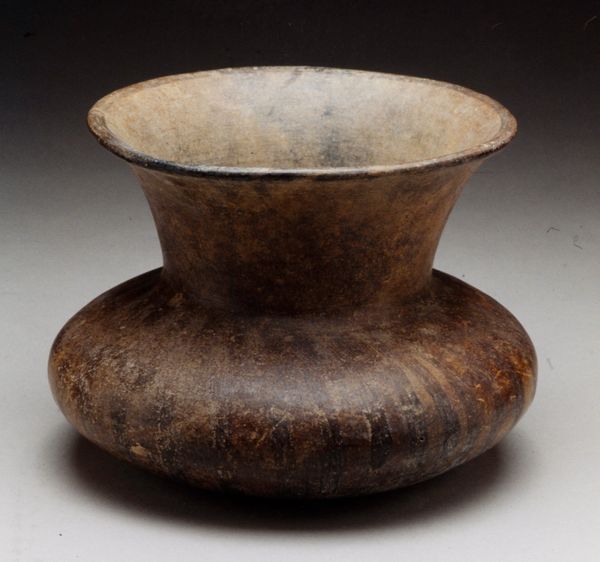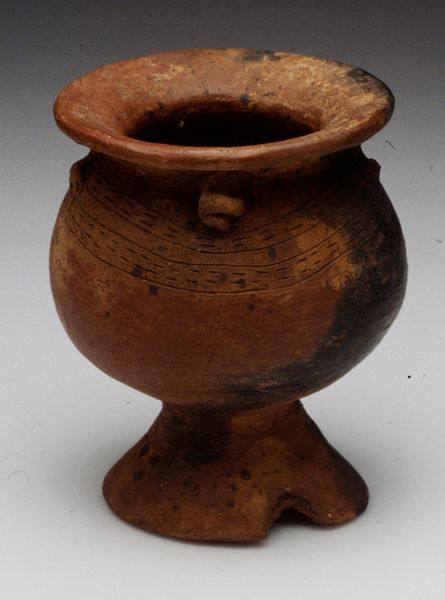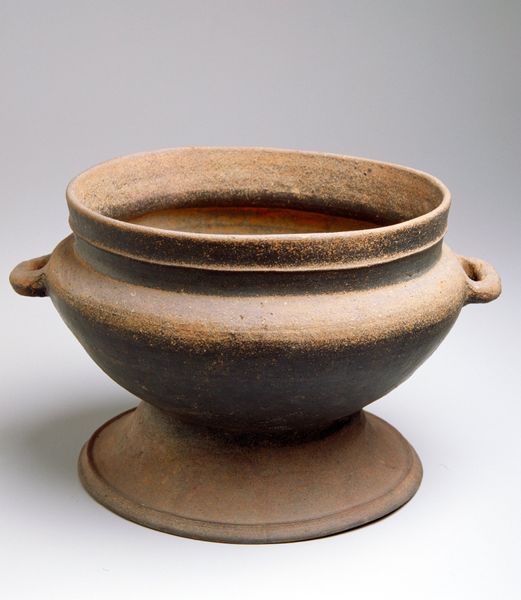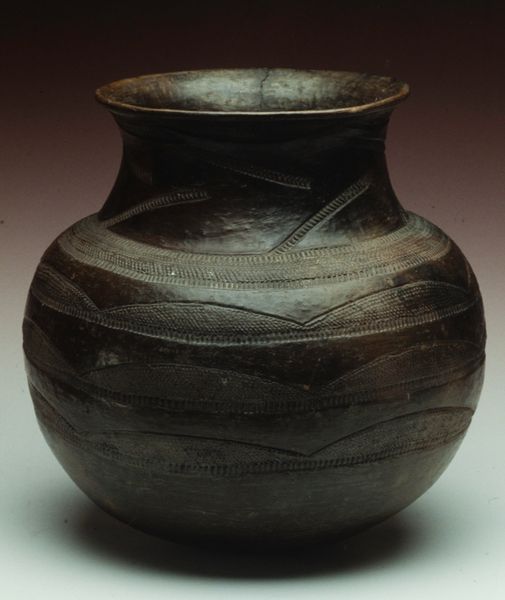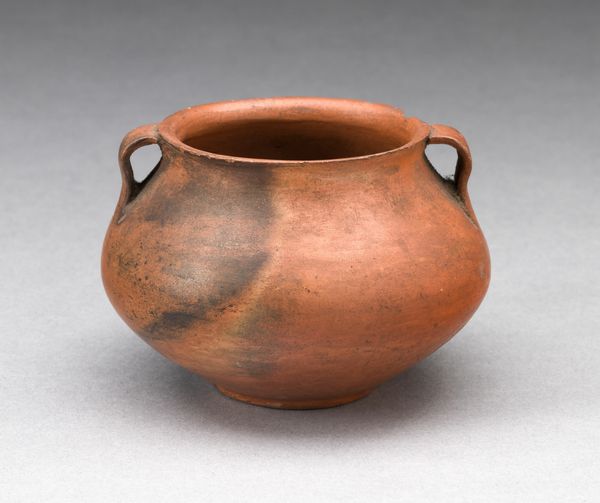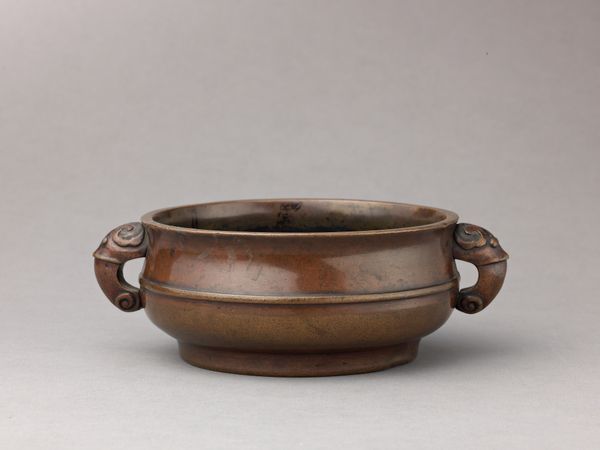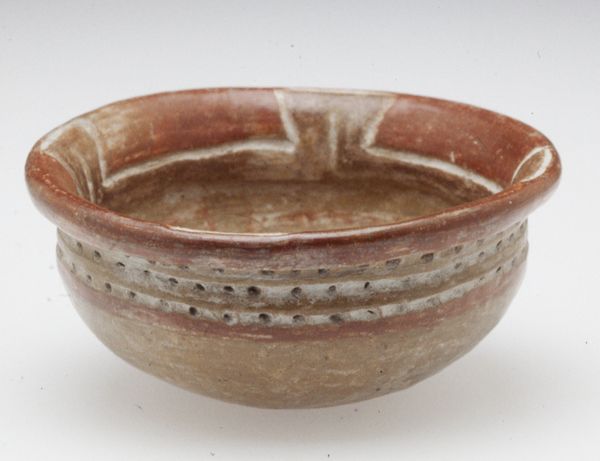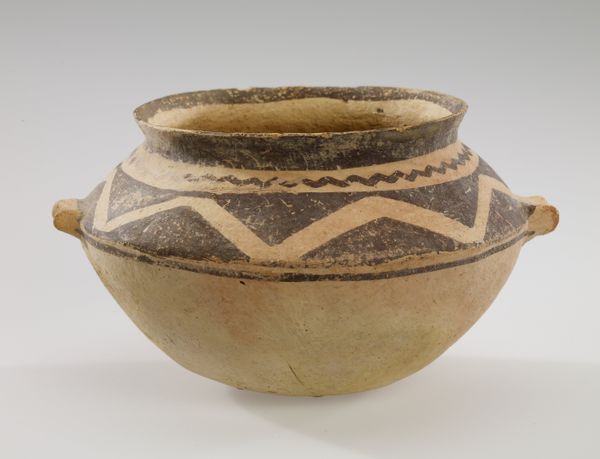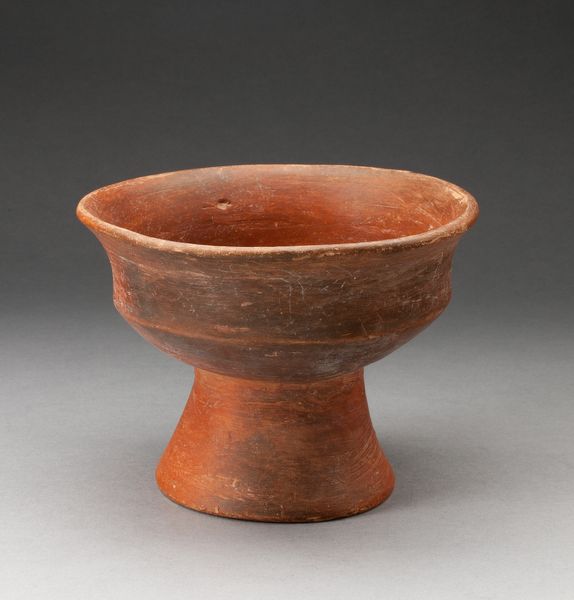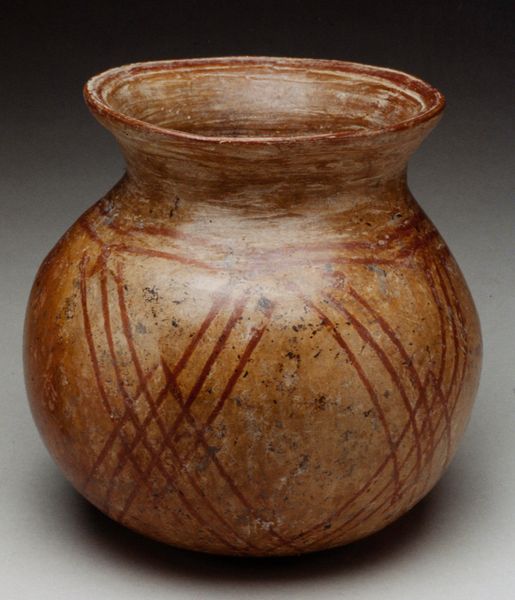
ceramic, earthenware
#
ceramic
#
form
#
earthenware
#
decorative-art
Dimensions: 8 1/2 x 9 1/4 in. (21.6 x 23.5 cm)
Copyright: Public Domain
Editor: This is an earthenware Globular Pot, dating to around the 20th century and currently held at the Minneapolis Institute of Art. I'm really drawn to the texture and the subtle geometric pattern across the surface. It feels somehow both ancient and modern. What stands out to you when you look at this piece? Curator: What immediately grabs me is how this pot speaks to the politics of display. It is exhibited here as a piece of decorative art and identified as an Indigenous Americas artwork, but its original context could have been so many things, domestic, ritualistic, or even industrial. I wonder, does its current framing as a "fine art" object elevate it, or does it obscure its original meaning and utility? Editor: That's a perspective I hadn't considered. Does the act of placing it in a museum inherently change our perception of it? Curator: Absolutely. Museums are not neutral spaces. They're shaped by curatorial choices, funding, and prevailing social values. How a piece is labeled and presented affects its perceived value and importance. Think about who gets to decide what’s “art” and whose cultural productions are considered “craft” or “artifact.” Editor: So, the pot’s beauty and form are almost secondary to the statement its display makes? Curator: Not secondary, but inextricably linked. Its beauty can't be separated from the history of how Indigenous artistry has been valued and contextualized—or often devalued— within Western art institutions. Consider how exhibiting it here contributes to, or challenges, narratives of cultural ownership and representation. Editor: I see what you mean. It adds so many layers to the viewing experience, thinking about it as more than just a visually pleasing object. Curator: Exactly. By considering the cultural and institutional context, we can engage with the pot on a much deeper and more meaningful level. Editor: That's really given me a lot to think about – how the presentation of art shapes its meaning just as much as the art itself. Curator: Precisely. And that awareness encourages a more critical and informed engagement with art, everywhere we encounter it.
Comments
No comments
Be the first to comment and join the conversation on the ultimate creative platform.
